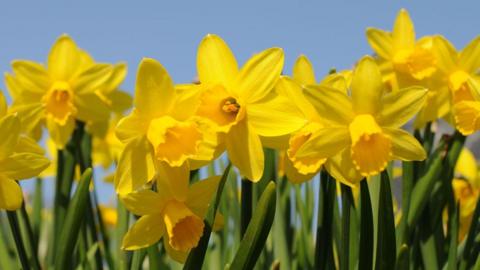Quest to Uncover Hidden Daffodils: A Journey in Search of Rare Flowers Feared Extinct
Yellow trumpet-shaped daffodils are a common sight in spring, but rare British varieties may be hiding in plain sight within gardens and parks, prompting experts to launch a search for these long-lost flowers.
Gwen Hines of the plant conservation charity Plant Heritage expressed her concern about losing these rare daffodil species if they’re not discovered and properly cared for. She highlighted both their aesthetic value during springtime as well as potential scientific importance, such as in future medical advancements.

Daffodilsscientifically known as narcissusare incredibly diverse, coming in various shapes, sizes, and colors including yellow (the most common), white, orange, and salmon-pink. These plants have been cultivated for centuries by the RHS garden charity to create a dazzling array of 30,000 different varieties.

The Sussex Bonfire daffodil is one such variety associated with bonfire nights in Lewes, Sussex. It was bred by local plant breeder Noel Burr but hasn’t been seen in at least two decades. Its vibrant orange-yellow flower makes it unique among the many daffodils he created.

Another example of a rare and lost daffodil is the Mrs R O Backhouse variety, one of many developed by plantswoman Sarah Backhouse before her passing in 1921. This particular daffodil stands out due to its salmon-pink trumpet surrounded by ivory flowers; it’s currently known to be part of national collections but has not been located.

The RHS is encouraging the public to help find these rare and missing daffodils, along with recording observations about where different types are blooming this spring. Dr Klmn K?nyves from the RHS spent 15 years studying these plants, emphasizing how mapping their growth locations could provide insights into climate change impacts.

By tracking down and conserving rare British daffodil varieties, gardeners and conservationists aim to preserve genetic diversity crucial for future plant breeding.

